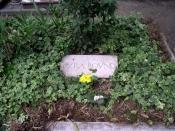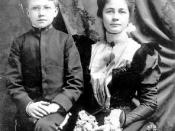As far as linguistics is concerned with the study of human language. And as it is known for anyone who is specialised in the field, it is divided into branches that consist of semantics which is the study of meaning at the level of words and concepts, at the second stage comes semiotics which means the use of symbols ,images to convey meaning, and thirdly we have pragmatics where meaning is understood through the context. So our attempt in this essay is the study of Ezra Pound's poem 'The Garden 'from three perspectives, semantically, semiotically and pragmatically.
"The Garden" is a free verse poem written by Ezra Pound. It was first published in 1913 in the collection "Poetry: A Magazine of Verse", then as part of his collection "Lustra" in 1916. The poem is comprised of four stanzas.(Alexander).
When reading the poem at a first glance the reader may notice that Pound is describing a young woman who has been born into the wealth of society and has grown up isolated from it.
In the first stanza the poet compares the young woman to a softy length. Then the silk is loose, much like the young woman who seem to be lost. Next, the poet refers to the woman's mental state. "She is dying piece-meal of a sort of emotional anaemia". So, anaemia is a condition to feel weak and tired and suggests the lack of vitality. In the second stanza, the poet is referring to a number of lower class children 'rabble fifthly, sturdy, unkillable infants of the very poor". Besides, the following line states that "they shall inherit the earth "which refers to the aristocratic category in Britain. Ezra Pound then makes a direct referencing to the woman's excessive boredom when he says "her boredom is...


